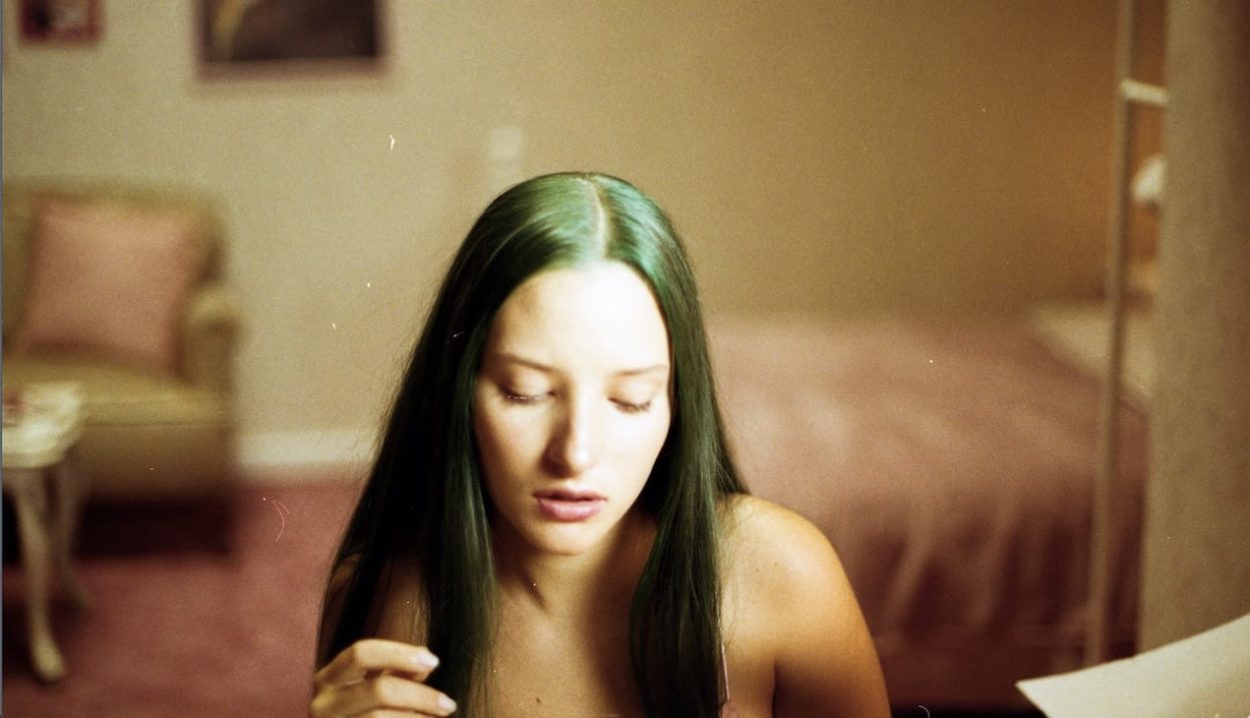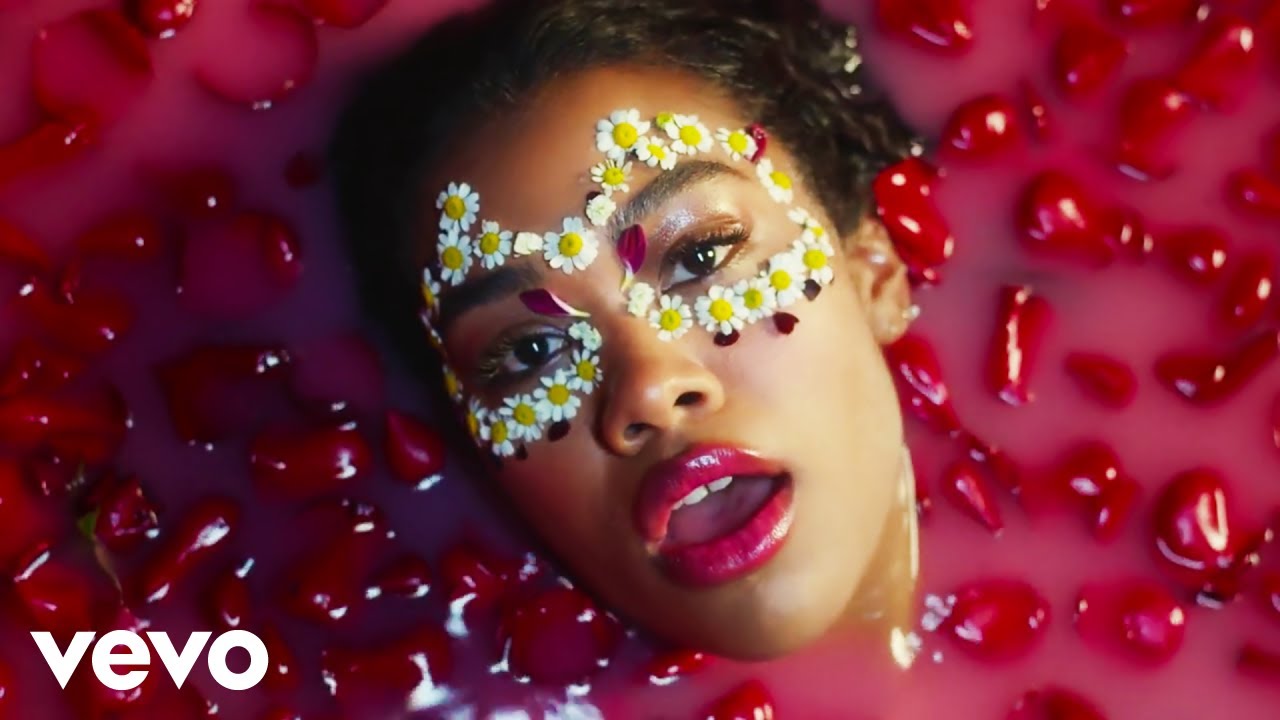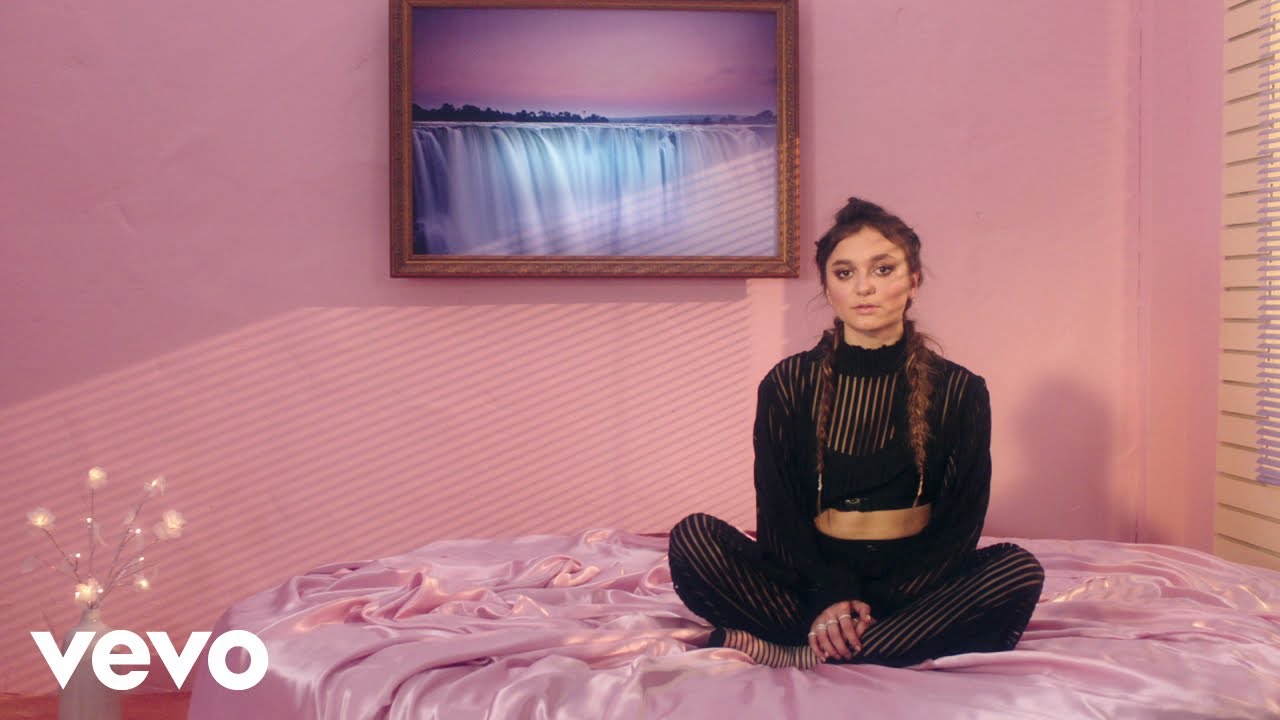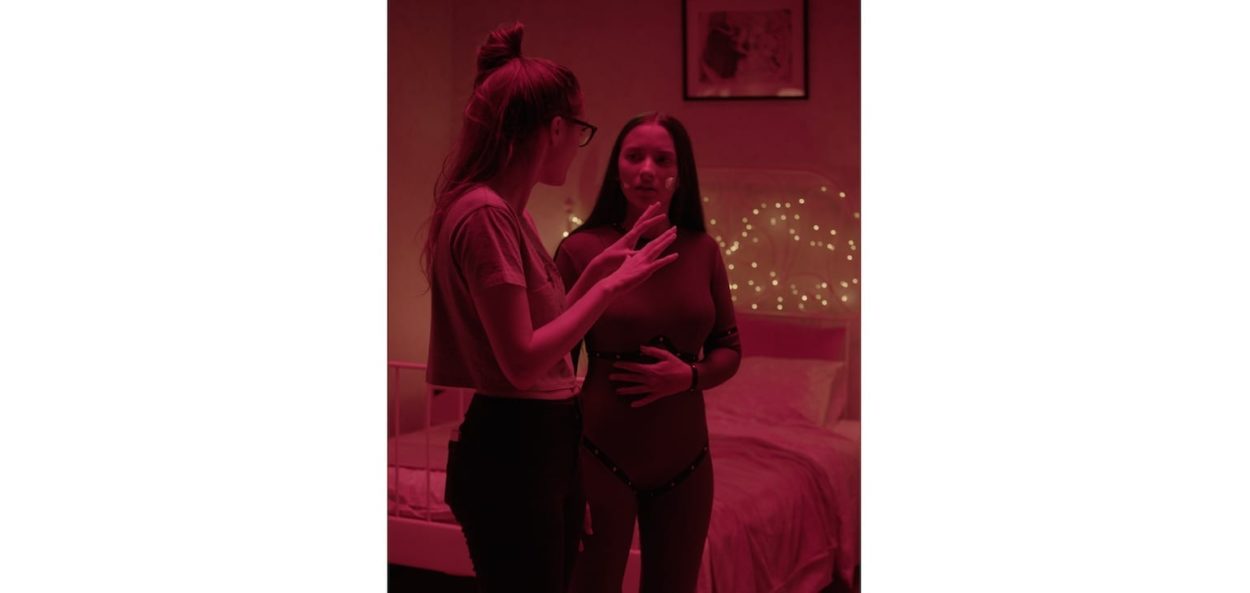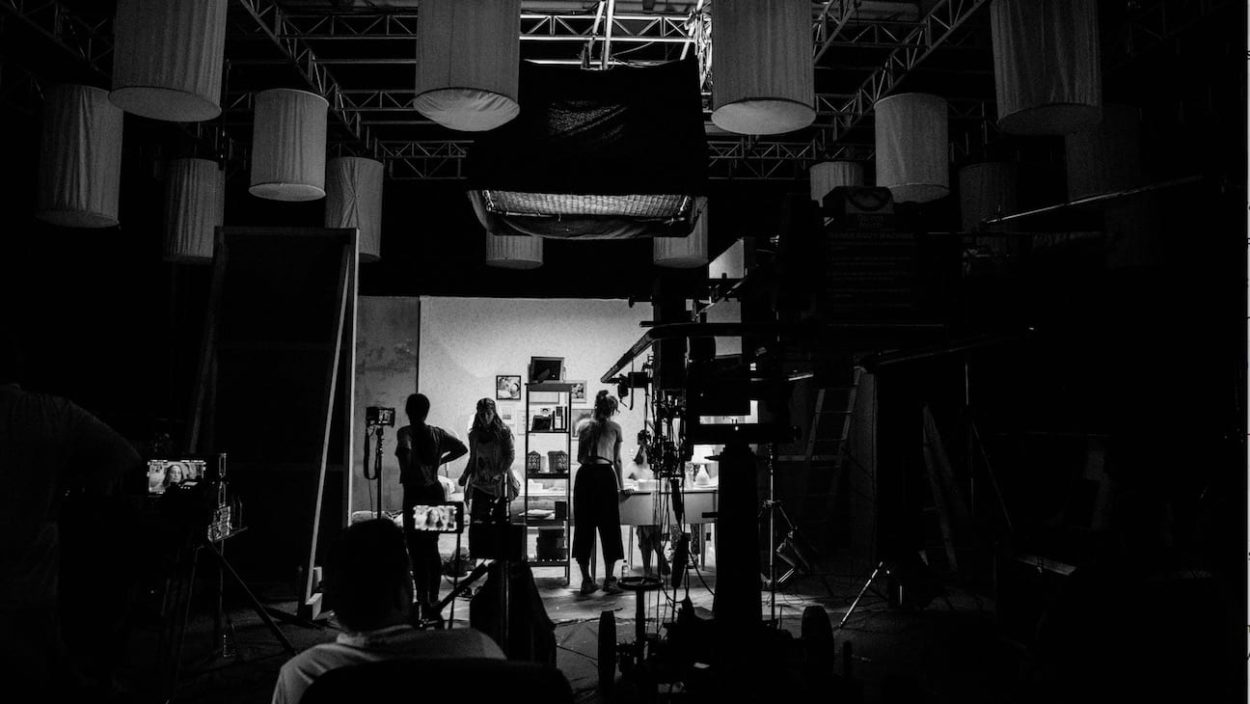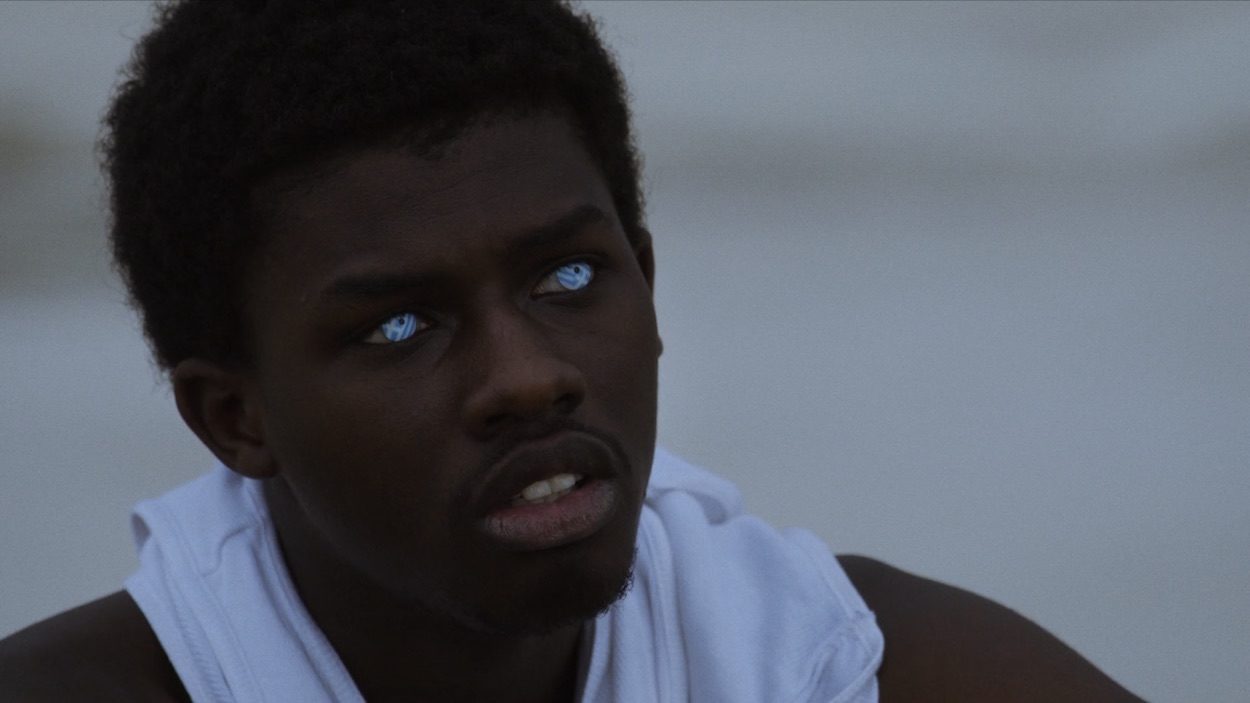How did you begin your career as a filmmaker; was it something you knew you wanted to eventually get into?
I studied graphics at Chelsea UAL but had always been a massive fan of cinema. A tutor of mine introduced me to David Lynch and my love for film grew from there. Our course wasn’t strictly just graphics-focused; it delved a lot into advertising, exploring how bold creative ideas bled into bigger campaigns.
In my third year, the awesome director David Wilson came as a guest tutor, and after chatting ideas through with him, I realised that film was the medium to explore in my final project. I love how film joins together so many different departments; sound design, colour, photography, set design, concept and styling. For me, it was about building enough confidence to give it a go.
You previously worked as a graphic designer, which is obvious through your earlier promos, 5SOS’ Don’t Wait and Lily Allen’s L8 CMMR, both very successful lyric videos. How much does this discipline inform your current creative process and is it a medium you’d be tempted to explore again through filmmaking?
My background in graphics definitely helped me enter the industry and illustrative animation was a great way in as demonstrated by my early projects! Although not totally the same as live action, animation taught me a lot about different parts of the process. I would definitely be up for using animation in my videos again, however only if it informed the idea rather than doing it just for the sake of it.
Previously you said that you wanted to concentrate more on live action, which you’ve certainly been doing the last few years. Where are you now; what are you currently focusing on?
I’ve been at Partizan for just under two years and have been navigating my way through live action projects to hone my style and voice as well as expanding my knowledge as much as possible.
I’m now at a place in my career where I want to take what I have learnt and push myself to do something new with each brief I get. I’m keen to develop new skills that nudge me a little further outside my comfort zone. I strongly believe that you never stop learning. In the new year, I want to focus more on narrative-driven pieces although I’m also writing a few shorts that I’d like to develop as well.
What do you do to stay inspired?
Old and world cinema provide ample inspiration. I love delving into worlds that I never even knew existed. I’ve mainly helmed music promos, but it’s cinema and stills photography where I absorb most of my inspiration from and which inform my own ideas. I also really enjoy people watching… whenever I have the time!
You’ve worked on a lot of promos recently for female artists with a very strong feminine style. Why do you think your aesthetic and vision compliments these artists?
I love working with other women; I do have a style and aesthetic that resonates well with female artists. It’s an aesthetic inspired by many of my favourite editorial photographers, particularly David LaChapelle. However, I always want to tailor my ideas and approach to compliment the artist’s message while also making it as visually-striking as possible.
Getting strong female performances comes from making women feel comfortable on-set, which involves getting to know them and finding out what excites them.
How do you approach your jobs; what’s your preparation process like? Your sets, makeup and costume are generally very colourful and playful, so I imagine it would be a very fun process…
Colour and composition is super important for me. Colour can symbolise so much and can really help capture a mood or create a response. I choose colours so whether they complement or clash, they’re there for a reason. Production design is a big part of my work. I make a mood board for almost everything so then it’s easy to get whatever’s in my head across to whoever I’m collaborating with. One of my favourite directors is Luc Besson; his colourfully-surreal and strangely-dark, hyper-realistic worlds are fascinating and there’s so much detail in the production design.
Tell me about the concept behind the Au/Ra Emoji promo.
The concept was developed from a brief sent over from the artist, Jamie Lou Stenzel. I wanted the video to be quite suggestive so that the viewer could piece together what they’re seeing and draw out their own meaning from it. In my mind, it’s about how corrupt our modern identities are; the video acts as a dark metaphor for the way people hide behind their online persona.
It reminds me of the highly acclaimed The Chemical Brothers’ Wide Open spot. How did you find working with a choreographer on the project?
I loved her! Stefaniya Georgieva was an absolute dream to work with. We shot the video in Bulgaria, where Stef is based, but only found out a few days before the shoot that Jamie had a super busy schedule and wouldn’t be able to squeeze in a rehearsal. That got me panicked!
Stef mainly works as a movement choreographer, so we met a few days before to watch videos of real AIs as well as scenes from some Alex Garland sci-fi films. Using these as a jumping off point, we played around with different movements. I wanted it to feel subtly impactful; there’s a fine line as robotic movements can easily become stereotypical. I hope I found the sweet spot between involuntary sharp shock-like glitches and emotionless fluidity.
A lot of the time on-set was spent rehearsing with Jamie, finding a movement that felt comfortably-awkward but looked great on camera. Jamie really trusted Stef and I, and she picked it up surprisingly quickly!
The film takes place in one location, which really helps to enhance the feeling of constraint. How did you ensure that there was enough going on in the story to satisfy the viewer?
With this concept, one location was enough, although I did decide against having windows or doors in the room to create a feeling of unease from the get-go. I was meticulous with my shot list, which helped to ensure we had enough going on. I treated each verse and chorus like its own mini video; sectioning them out and playing them over again and again.
The skin doesn’t peel until the second chorus, so the first half of the video was about building and setting the scene, preparing for the big reveal. Pacing was really important; I peppered small teases throughout to keep the intrigue and let the story breathe.
The Emoji promo seems darker than some of your other music videos, subtly commenting on society… what message do you want viewers to take away?
I’ve always had dark taste creatively; I’m into things that look lovely but have a darker subtext. There is something devilishly intoxicating about that mystique and contrast. The Emoji brief allowed me to demonstrate that side of myself. The ending was definitely meant to feel like a voyeuristic punctuation that leaves viewers with an eerily-claustrophobic feeling, a reminder of the inescapable online-centric world we’re living in.
And what’s the biggest lesson you’ve learnt to date in your career as a filmmaker?
There’s no formula to filmmaking. Every project is different so I adapt my approach with each shoot I work on. That is the beauty and privilege of being a director; no two days are the same.
Interview by Olivia Atkins
LINKS
